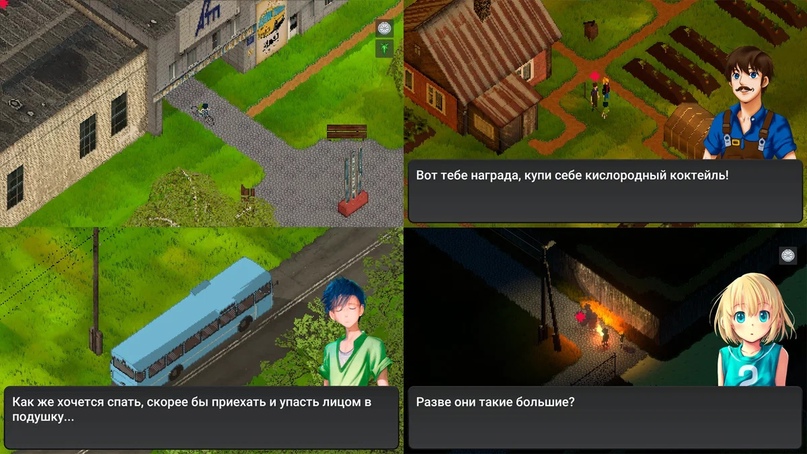
I recently found myself feeling nostalgic and reminiscing about my childhood spent in the countryside with my parents during the summer. The memories were so vivid that I decided to create a video game that would allow me to share my experiences with others.
I kept coming back to this idea and even wrote down all my thoughts and ideas, but I never really did anything about it until a few months ago when I finally got myself together and started working on the game.
Aesthetics
The abundance of nature surrounding rural areas, typical of the Soviet era, combined with an unquenchable thirst for adventure - these three pillars formed the foundation for the game's further development.
I struggled for a while to decide on a visual style, so I decided to combine all the things I love. To convey the story, I'm using elements of a visual novel, but I'm also allowing players to freely explore an open world with an isometric projection.
Characters
For the character creation process, I use the advanced capabilities of DALL-E 2 technology.
This typically involves producing multiple iterations, often exceeding several dozen, to find the perfect match for the game's specific style and aesthetic.
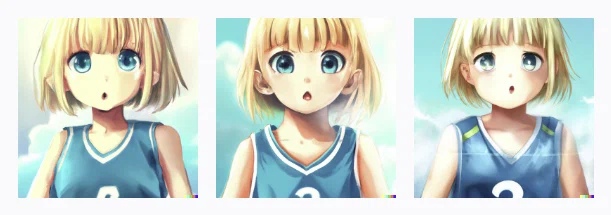
After generating multiple options, I then manually refine them to achieve the final result and add a range of emotional variations to the characters.

Depending on the character, this process can take me anywhere from 2 to 4 hours to complete.
Graphics
To give the game that sweet retro vibe, I decided to create the world using a bunch of tiles.
I was able to recreate all the locations that I remember exploring as a kid, from the fields to the forests to the winding roads. It was a great way to bring back those memories and create a really immersive game world. Plus, because the game is so efficient, players can explore all those areas without worrying about the game slowing down or crashing.
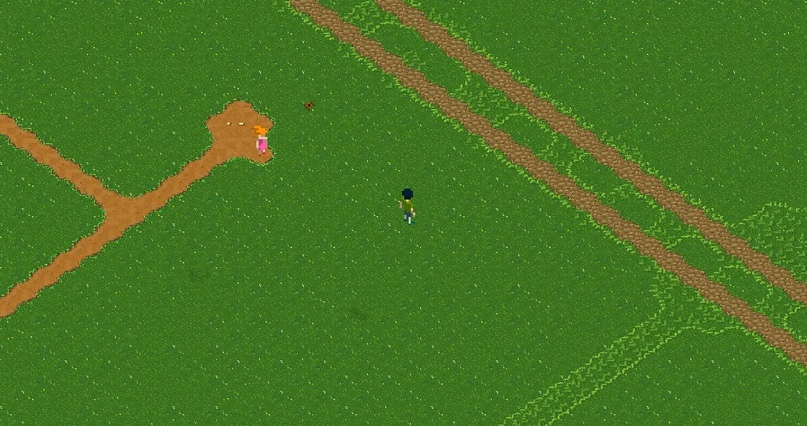
After that, I added some more detailed and realistic procedural grass over the tiles to really make the game world pop. It was all about making everything look more vibrant and visually engaging, and the grass was a big part of that.

Then, I went ahead and created a separate layer just for forests and bushes.
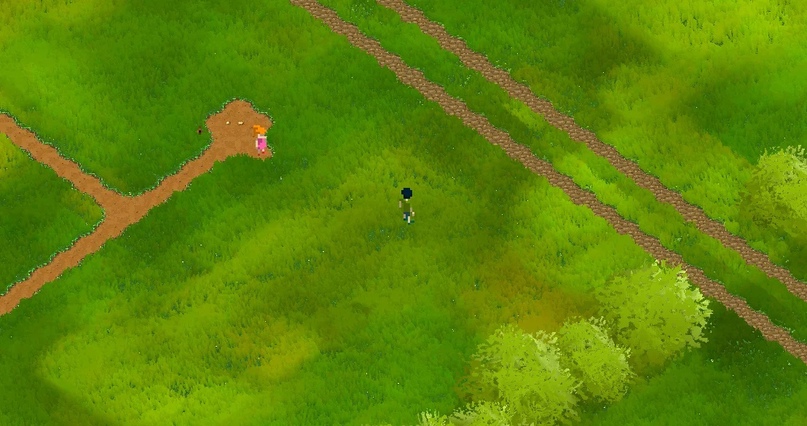
And last but not least, I added objects to the game world, using this cool pixel art shader.
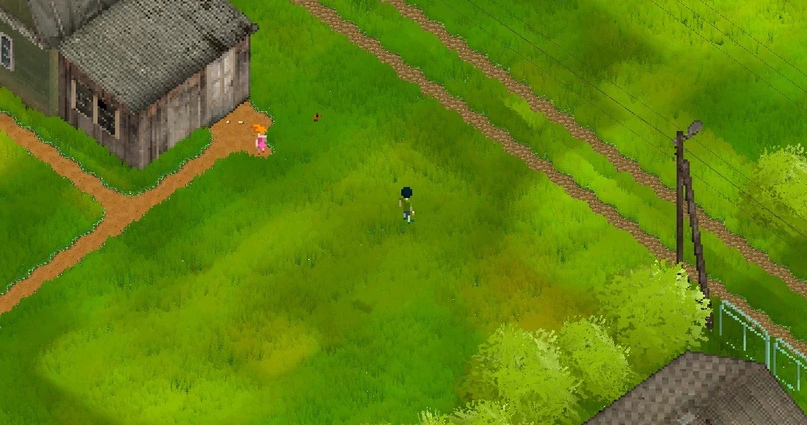
This shader lets me turn any 3D models into pixel art sprites, which is a great time-saver since I don't have to create sprites from scratch. It was a fun way to bring a unique style to the game and make everything look retro-cool. I didn't have to make all these objects by hand, which saved me a ton of time. The person who created the shaders is super helpful and quick to fix any bugs that come up.
One of the biggest challenges I faced was making sure that all the different styles looked good together, especially during the day and night transitions. It's been a bit of a manual process to adjust the lighting for many of the game's elements, but it's all worth it to achieve the right look and feel for the game world.
Музыка
Music is super important for creating the right vibe and atmosphere in the game.
I really wanted to create a bunch of awesome tracks in the Retrowave/Sovietwave genre for the game. To make this happen, I used a cool tool called Mubert AI, which lets you generate tracks based on a written description using a neural network. I ended up generating hundreds of tracks and then selecting the ones that worked best for the game's vibe and style.
Here are some examples of the tracks (the background images were also generated using a neural network).
Plot
The plot finds its basis in the reminiscences of my childhood, while the characters represent composite images of my friends.
So, when I'm coding the game, I always have this amazing tool Copilot by my side. It's a neural network that helps speed up development, but the craziest thing is, it's been super useful in coming up with the storyline too!

As you can see, while writing dialogue, the system itself suggests possible responses that can be used either as inspiration or as is.
I also use ChatGPT to translate to English, Russian, and Japanese.\
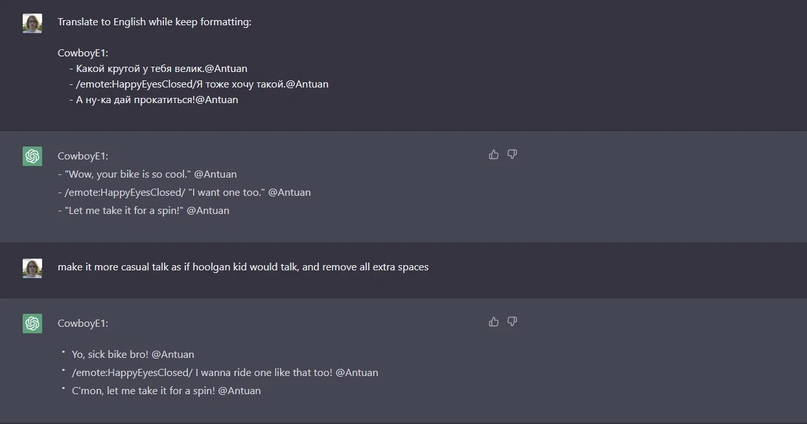
Gameplay
The game controls are very straightforward. You can play using just a mouse or opt for a keyboard or gamepad. As you progress through the game, the player can interact with other characters, battle enemies, and exercise resourcefulness to get out of tricky situations.
As a result, we get the game Oxygen Cocktail.


